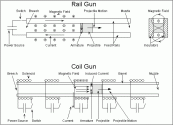Its an old design because it doesn't do anything revolutionary like what PLA is doing with J-36, DF-27 or Next gen unmanned turret tanks. Its just a very conservative normal surface ship that is on par with US, Korean or Japanese DDG designs. A standard ship with AESA and VLS cells, that's it.
If the Type 055 is an "old design", then lots of US platforms should be classified as ancient, even any recent ones within the same timeline. The Type 055 is not "old". Its design may have been finalized around the early 2010s, around the time it was beginning construction, but that doesn't make it an "old design". The first ship in class only entered service in 2020. And why does it
have to be revolutionary? Maybe the 055 isn't a "revolutionary design", but it incorporates features not seen on surface combatants before, and its design and role have clearly pioneered what other countries want for a surface combatant now, given the multitude of countries building large surface combatants like this in a similar or even larger tonnage range with similar capabilities. It's AESA is the largest and most advanced on any surface combatant, and its VLS design is much more versatile and different from other countries' VLS, that even the US appears to be emulating its VLS diameter size for DDG(X) modules.
A true next gen ship in my opinion will be either high stealth focus similar to zumwalt with also very good armament such as ability to launch hypersonic ASBMs, HQ-19 or HQ-29 level Missile and Air defense capability and something next gen such as laser or rail gun.
I honestly don't think "stealth" is a major factor or difference maker when it comes to ships compared to aircraft. But nonetheless, everything you just described is something the 055 and 052Ds (some things) can already do, or will have the ability to do in an MLU down the line. It can already carry ASBMs, which is the first ship to do it, so you could say that's "revolutionary", especially as the force multiplier it can be with other ships, which is a MaRV and has a hypersonic terminal stage. I see zero reason why a YJ-21 variant with a small/mini HGV cannot be integrated into UVLS cells.
As for everything else, HQ-29 is a KEI-sized missile; you probably meant HQ-26, which again does not seem that large to where it cannot fit in UVLS cells, same with HQ-19, but I'm not too sure about its diameter and might be slightly too large. UVLS cells can most definitely fit an ABM missile, but ABM is not a priority or focus for the PLAN because they face no mass ballistic missile threat. I think if any ABM missile like HQ-26 or an entirely newly developed ABM missile is implemented with 055s/052Ds eventually, it'll be more so for hypersonic defense and more complex maneuvering threats. I don't see the need for a rail gun as China already experimented with that, and it should have enough power generation to house DEWs in any future variant or ships that have had MLUs. It's a 13K-ton ship mind you.
If the focus is not on high stealth, then another focus could be integration of drone launching/retrieval. It could be very high displacement such as 20K ton with big VLS cells along with the drone capabilities.
You have to remember these are DDGs, not aircraft carriers. Type 055s and 052Ds already carry drones for use. They aren't slightly larger, higher-end, medium-to-long endurance drones like you may see with some of the PLARFs ISR drones they operate, but they use a certain VTOL drone model for ISR around small islands and whatnot, and could use larger ones if they wanted. What you're asking for is some mega cruiser that has already been discussed and likely isn't going to happen. Assuming 055 has a "successor", it'll again be a variant, or if they do make an entirely new surface combatant, it likely would be in a heavier tonnage range, but not 20K tons.



